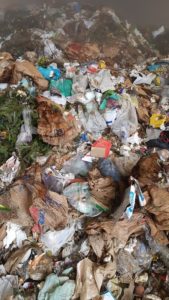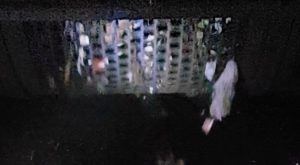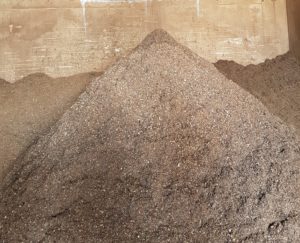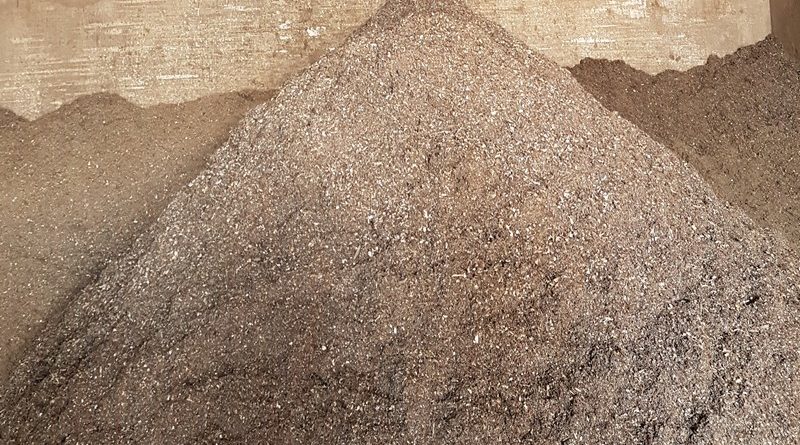We’re composting plastic now?
Larry & Patricia Newman
Orgaworld, Ottawa’s composting plant which we reported on in the 2018 June-July issue is now called Renewi. Wait – that’s out of date. Since October 14, 2019, it’s Convertu as Renewi sold it to Convent Capital, an investment firm.
In 2018, after we heard that the city had voted to allow the plant to accept organic waste in plastic bags, we visited the plant for a “before” tour. We discovered that Orgaworld produced compost and NASM (Non Agricultural Source Material) as well as a liquid chemical resulting from passing water through the ammonia gas produced during the composting process. This chemical, ammonium sulfate (NH4)2SO4, is sold as fertilizer.
Compost standards are different from NASM, the most contentious one being the requirement for compost to be 40% moisture. Farmers object to the cost of hauling that much water with their bedding material or compost. NASM is essentially compost without most of that water. Today’s tour revealed that only NASM and ammonium sulfate are produced.
As of last August, the city began allowing the collection of plastic bags and doggy dung with kitchen scraps and yard waste in green bins. This was part of a deal with Orgaworld, changing the contract to require processing of 75,000 tonnes of organic waste each year, reduced from 80,000 tonnes. We visited the site where the processing was taking place to follow the plastic through the composting process.

The first thing to understand is that the plastic bags go through the composting process with kitchen and yard waste. After the Green Bin waste with its newly allowed plastic, largely polyethylene bags, is dumped from the truck to the concrete floor. It is scooped up and fed into a large machine that tears the bags apart, using a technique that is best imagined by threading the fingers of your right hand through the stationary fingers of your left. The bags are caught between the fingers and torn apart.
The organic material with ripped plastic bags is then delivered to huge aerated, but closed, tunnels in which aerobic digestion (composting) takes place. While the green bin material is in the composting tunnels, microorganisms digest the material, releasing heat. In order to insure that all toxic ingredients are consumed, the temperature of the material must meet or exceed 55 degrees C continuously for at least 72 hours. The plastic goes along for the ride. It was plain to see that the composted product contained plastic film that looked intact. And it should, as polyethylene melts at 105 degrees C (Wikipedia), much hotter than 55.

After seven to ten days, the composted material with the torn plastic bags is directed from the composting tunnels into rotating drums with holes in them. The first drum filters the composted material and plastic through hundreds of round three inch (75 mm) holes removing the large pieces of plastic and yard waste that remain uncomposted. The filtered material then goes through the second drum, which has one inch (25 mm) diameter holes, removing smaller non-organic material. In the process, it is also screened to remove all non-organic material (sharps) over 3.75 mm in size.

The resulting largely organic material contains less than 0.5% plastic by weight. Samples are measured by a hired laboratory. It is now dumped into a large bin with woody material that looks as if it had gone through a shredding machine. The woody material captures most of the objectionable odour.
We looked at and rubbed the end result between our fingers. There was some plastic but it was in very small pieces and we would say there was much less than we expected. Whether this means that this small amount of plastic is acceptable in the long term, is a question. As farmers use this material to improve their soil year after year, the plastic will surely continuously add a foreign component to the soil as it biodegrades slowly.
